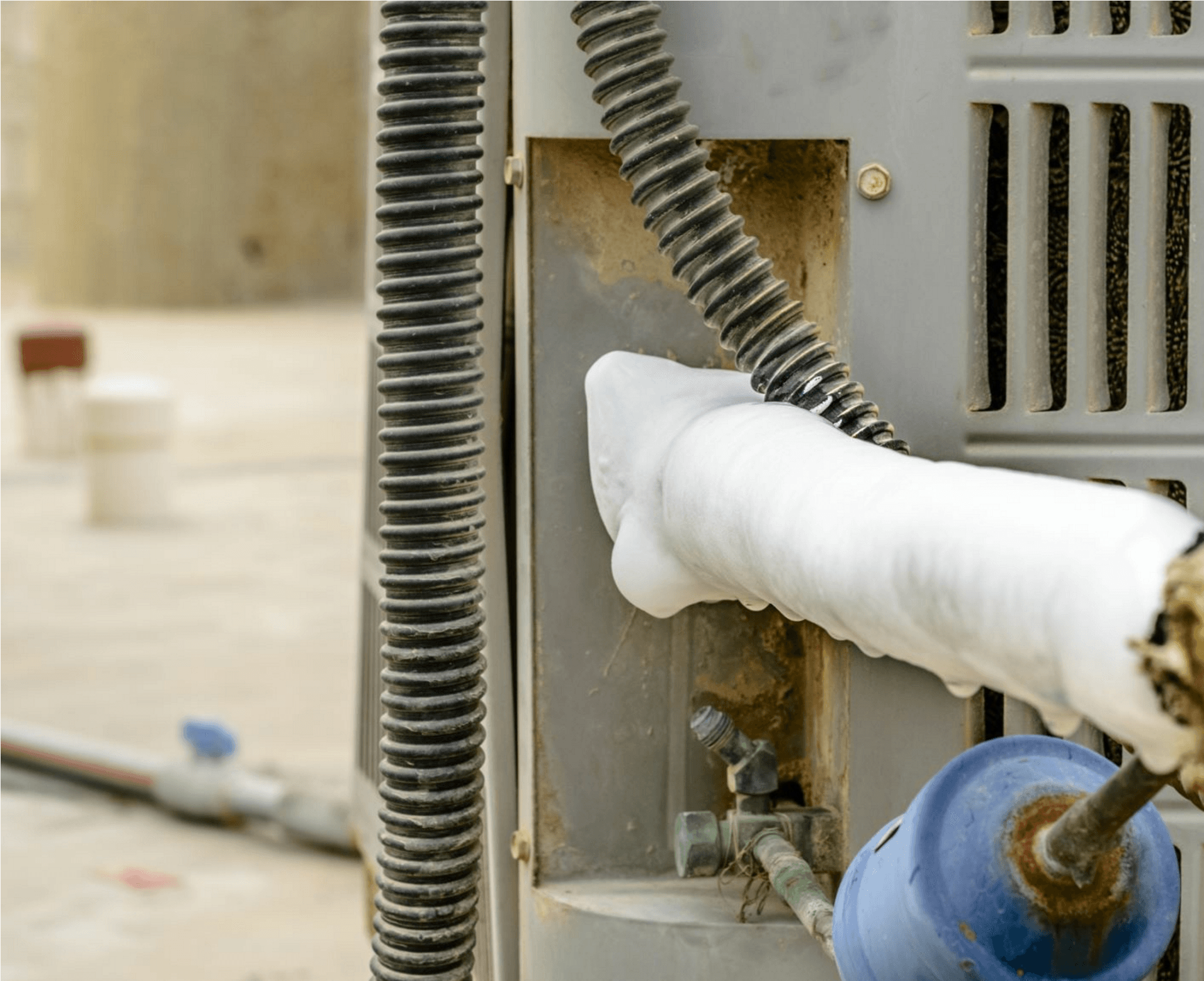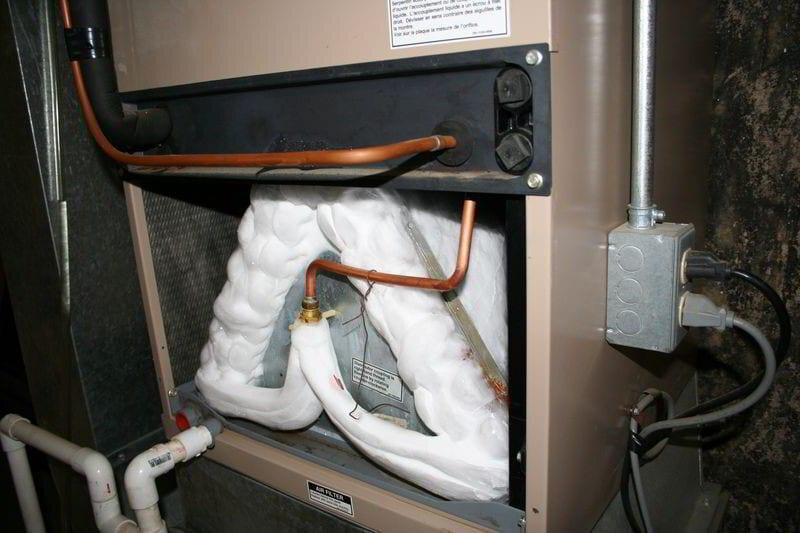My AC Pipe Is Frozen - What Do I Do? Guidance for Homeowners
My AC Pipe Is Frozen - What Do I Do? Guidance for Homeowners
Blog Article
What're your concepts about Air Conditioner Frozen? How To Fix your Frozen AC Line?

Introduction
Finding that your a/c pipe is iced up can be worrying, especially during warm summer season when you count on your air conditioner one of the most. Understanding what to do in such a situation is critical to avoid further damage to your cooling system and guarantee your convenience inside your home.
Recognizing the Causes
A number of elements can contribute to the cold of an air conditioner pipeline. Recognizing these causes can aid you deal with the issue effectively.
Absence of Airflow
One common source of a frozen AC pipeline is inadequate air flow. When the airflow over the evaporator coil is restricted, it can create the coil to go down below freezing temperature level, causing ice formation on the pipe.
Low Refrigerant Levels
Not enough cooling agent levels in your air conditioning system can likewise lead to a frozen pipeline. Low refrigerant degrees can cause the pressure in the system to go down, leading to the cold of moisture on the evaporator coil.
Cold Weather Conditions
In colder climates, freezing temperatures outside can add to the cold of air conditioner pipelines. If your AC device is not properly insulated or if there are leaks in the ductwork, cold air can penetrate the system, creating the pipeline to ice up.
Dirty Air Filters
Filthy or stopped up air filters can restrict air movement in your a/c system, causing different issues, consisting of an icy pipe. It's necessary to replace or cleanse your air filterings system consistently to make sure proper air movement and protect against ice accumulation.
Indicators of a Frozen A/c Pipe
Recognizing the indications of a frozen air conditioner pipeline is critical for punctual activity.
Lowered Airflow
If you see a substantial decline in air flow from your vents, it can suggest a frozen pipe.
Ice Buildup on the Pipe
Visible ice build-up on the cooling agent line or the evaporator coil is a clear indicator of a frozen air conditioner pipeline.
Unusual Sounds from the Unit
Unusual audios, such as hissing or gurgling, coming from your air conditioner unit can signify that there's ice existing on the pipe.
Immediate Actions to Take
When faced with an icy air conditioner pipeline, it's essential to act rapidly to prevent further damage to your cooling system.
Turning off the AC
The initial step is to turn off your air conditioning system to avoid the system from running and intensifying the issue.
Checking for Blockages
Examine the location around the indoor device for any kind of obstructions that might be blocking air movement, such as furniture or drapes.
Thawing the Pipe
You can make use of mild approaches like positioning towels taken in cozy water around the icy pipeline to aid thaw it gradually.
Safety nets
Taking safety nets can assist prevent future events of an icy air conditioner pipeline.
When DIY Methods Fail
If your efforts to thaw the pipeline or address other issues are unsuccessful, it's time to call in a professional.
Significance of Hiring a Professional HVAC Technician
A certified HVAC technician has the knowledge and tools essential to diagnose and repair problems with your AC system safely and properly.
Regular Maintenance Checks
Set up normal upkeep consult an expert HVAC technician to make sure that your AC system is running effectively.
Altering Air Filters
Frequently change or clean your air filters to prevent airflow constraints and preserve optimal efficiency.
Insulating Exposed Pipes
If your a/c pipelines are exposed to cold temperature levels, consider protecting them to avoid cold throughout cold weather.
Looking For Professional Help
If DIY approaches fall short to resolve the issue or if you're uncertain concerning just how to continue, it's finest to seek support from a qualified HVAC specialist.
Conclusion
Dealing with an icy air conditioner pipeline can be a frustrating experience, yet understanding how to react can assist reduce damage and recover comfort to your home. By understanding the causes, acknowledging the indicators, and taking punctual activity, you can properly resolve the concern and protect against future events.
Frozen AC Line: Why It Happens & What To Do About It
A frozen AC line can be a rather peculiar sight in a place like Phoenix, Arizona where nothing ever freezes. In this post, we’ll discuss what makes an air conditioner line frozen – and what you can do about it.
Dirty Air Filters
Did you know that you should be cleaning or replacing your air filters on a monthly basis? Failing to do this can result in airflow issues that, in turn, cause your evaporator coils and lines to freeze over. You’ll notice a buildup of ice on both components, although the buildup on your pipes will, of course, be more evident unless you open your air condition up to reveal the coils.
What To Do About It
Give your air filter a good cleaning if it’s reusable. If not, replace the filter outright. Next, switch your air conditioner’s fan setting on and leave it there for 2-3 hours. This will draw warm air in, helping to thaw your evaporator coil. You can also check out this article for some tips on cleaning the coils themselves if you’d like to speed the process up. Before you switch the unit back to its normal state, make sure the supply vents are completely unobstructed and free of dust or other debris.
If you keep having this issue even after replacing your filters regularly, contact a local HVAC repair company and have them inspect your evaporator coil, ductwork, and any other components that may be at fault. If you live in the Phoenix, Arizona area, give American Home Water and Air a call.
Low Refrigerant Levels/Leakage
What To Do About It
Contrary to what air conditioner “recharge” companies often tell their clients about refrigerant, it should never need to be simply refilled. You see, refrigerant runs in what experts refer to as a “closed loop.” Refrigerant really shouldn’t be leaving that loop. If it is, you’ve got a leak.
Paying someone to come and pump more refrigerant into your system (aka “recharge” it) isn’t the solution. Doing that will simply kick the can down the road. Besides, refrigerant leaks can be harmful to the environment and people in your home.
Rather, you need to take care of the leak with the help of a technician. Check out this article for some more information about dealing with air conditioners that are leaking refrigerant. Before you contact a technician, switch your thermostat to the off position. Then, switch the fan setting on and let it run for 2-3 hours so the unit can thaw.
Improper Temperature Setting
Improper temperature settings can also cause a drop in your air conditioner’s pressure. What many people don’t realize is that air conditioners are actually designed to run when temperatures have fallen above roughly 60 degrees Fahrenheit. If you run the unit when it’s cold outside, you’ll run into many issues, including frozen components.

I found that blog posting on How can I fix an air conditioner’s frozen pipe? when doing a lookup on the web. Are you aware of somebody who is intrigued by the subject? Feel free to promote it. We thank you for reading our article about How can I fix an air conditioner’s frozen pipe?.
Request Your Service Report this page